The first thing to say about The Palace of Elysium is that it never existed.
The road to Elysium
Google Maps wasn’t much use. The name of the approach road is marked as „unnamed road“ which is kind of amusing. You follow Unnamed Road for maybe 20 minutes. Then you find a piece of raised earth, like a neolithic burial ground. In front of it, a discarded extraction fan and some sections of plastic industrial piping.
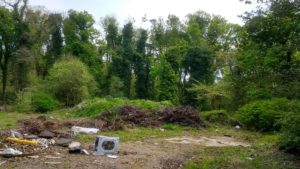
First sight of Elysium
Eventually you get to the building. On first sight it’s unimpressive. It’s completely sealed off by aluminium perimeter fencing topped with razor wire. I had to photograph the building from between narrow gaps in the fence. From this angle it could be a car park, or 1960s public housing in North London. There are – inexplicably – four redbrick cooling towers outside, and someone has painted a mystical four-syllable poem on the front of the building: EXPENSIVE SHIT.
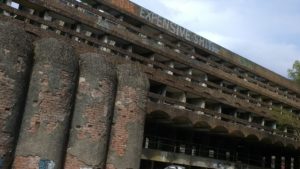
Inside the Palace of Elysium
Like I said, you can’t go inside. These photographs were also taken by putting my phone through gaps in the fence, hence the awkward angles and inelegant framing.
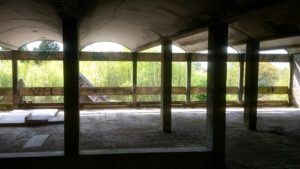
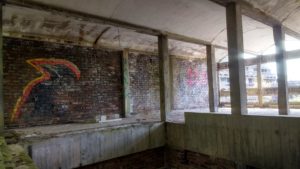
At this point, and for no reason, RD Laing pops into my mind. Then pops back out again, saying nothing.
The TV room & a bedroom window
The TV room, where people once presumably sat watching Kojak, Hawaii 5-0 and Star Trek:
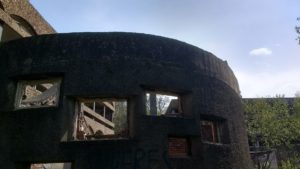
And it’s odd how the blocky, concrete car park shape of the building suddenly gives way to other forms. The TV room is round. What this means in terms of architectural semiotics I have no idea. This cell block also has curved walls. Its window is now glassless and forlorn.
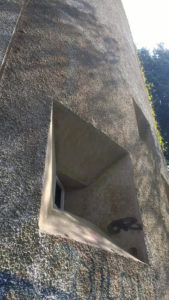
The Zone
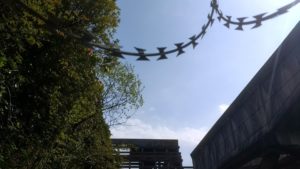
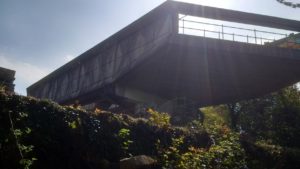
It wasn’t possible to get a good shot of The Zone. It’s actually right on the edge of a precipice so you have razor wire in front of you and a 100 foot drop on the other. And so you can’t step back and get the whole of this structure in the shot. It’s like a flattened amphibious landing craft set on a massive plinth, with an observation window at the front, again now glassless.
My phone rings. It’s Ivan Chtcheglov. He says this:
All cities are geological. You can’t take three steps without encountering ghosts bearing all the prestige of their legends. We move within a closed landscape whose landmarks constantly draw us toward the past. Certain shifting angles, certain receding perspectives, allow us to glimpse original conceptions of space, but this vision remains fragmentary. It must be sought in the magical locales of fairy tales and surrealist writings: castles, endless walls, little forgotten bars, mammoth caverns, casino mirrors. These dated images retain a small catalyzing power, but it is almost impossible to use them in a symbolic urbanism without rejuvenating them by giving them a new meaning.
The Palace of Elysium must be built.